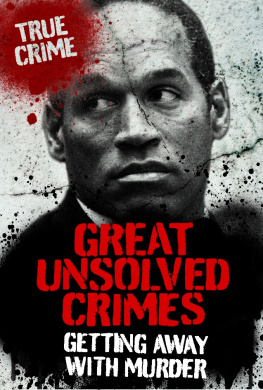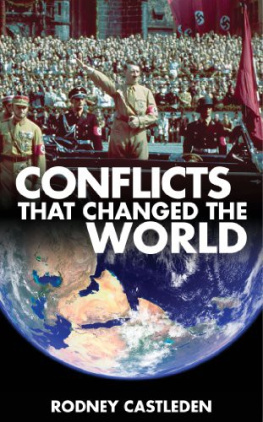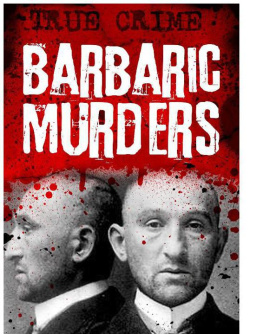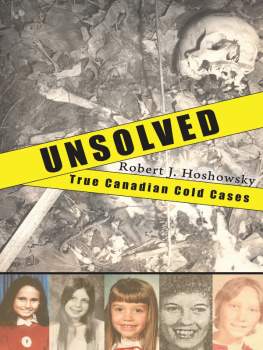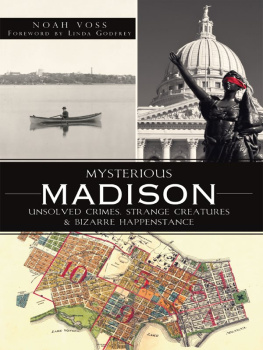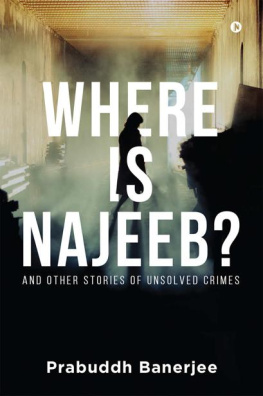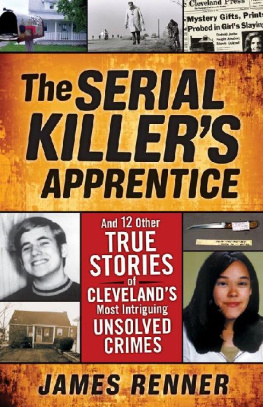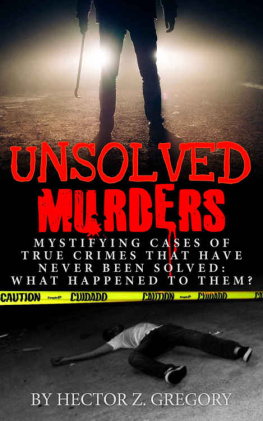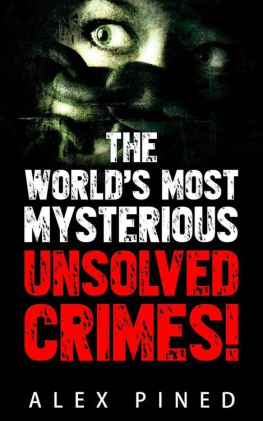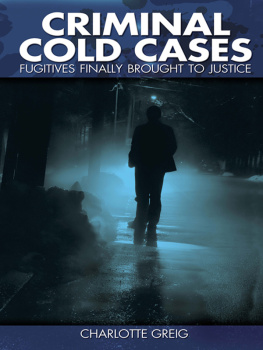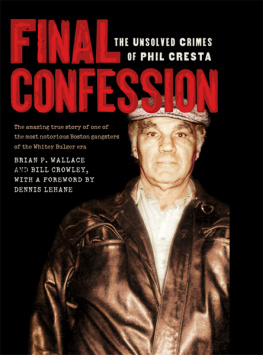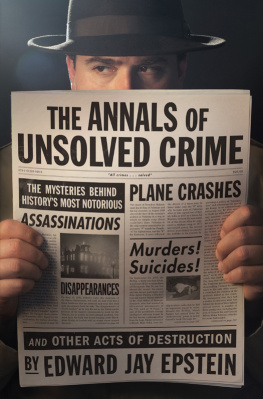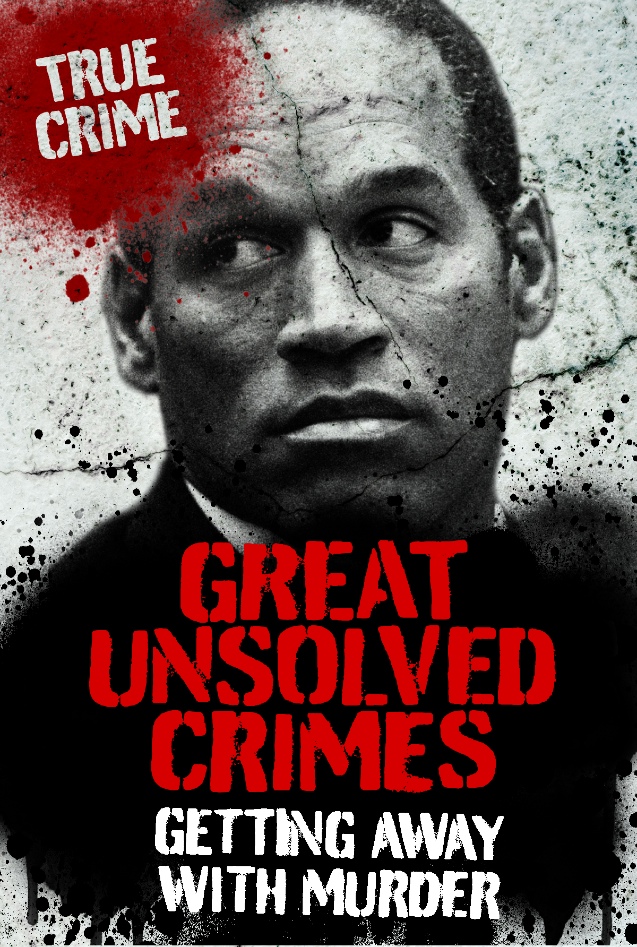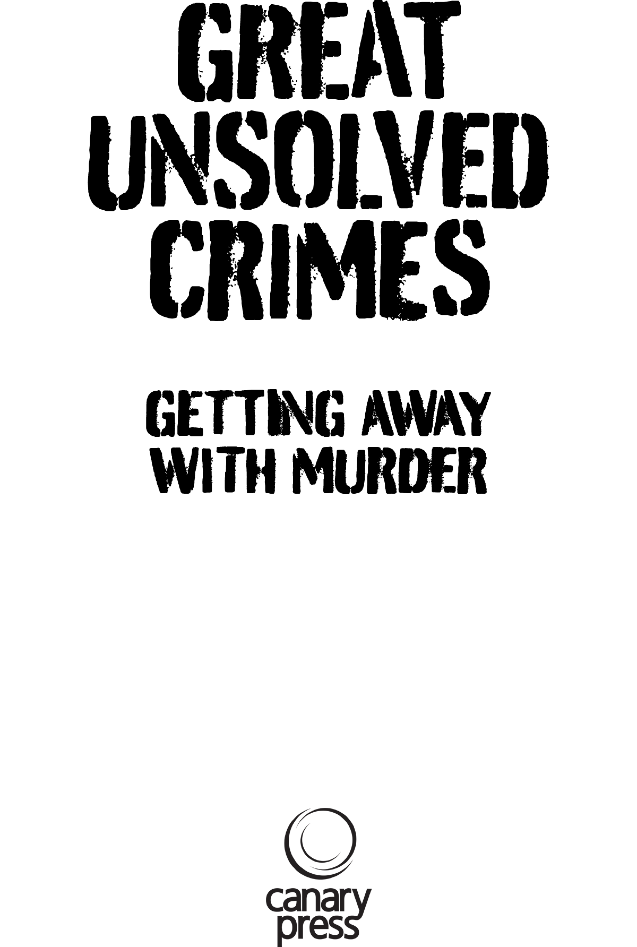Introduction

Of all crimes, the most worrying is the crime that is never solved. The perpetrator of the crime goes free, unpunished, often unidentified. Justice is not done. The friends and relatives of the victim crimes always have victims are left without closure. Often the parents, children and siblings of a murder victim live out the rest of their lives in a state of uncertainty, and sometimes fear or anger, because the crime went unpunished; their lives are often seriously damaged. Another unsatisfactory aspect of unsolved crimes is that whoever committed the crime is free to commit another. Police are very properly concerned about unsolved crimes for all of these reasons. Their concern has sometimes led to an excessive eagerness and haste in finding a suspect. The wrong person is suspected, and even convicted; so some crimes that at first appear to have been solved later turn out not to have been, and a double injustice has been done.
In past centuries, before forensic techniques and before the mass media, it was relatively easy for powerful people to commit large-scale crimes with impunity. In some societies, such as the absolute monarchies of the middle ages and the totalitarian regimes of the twentieth-century dictators, judicial murders were commonplace. But there were also crimes that were concealed, crimes that were presented as accidents; spin is not an invention of the Blair government.
With some crimes, the mystery is the age-old, central question: Whodunit? Many of the stories told in this book are whodunits. To find out who committed a crime, we need to examine the events that led up to the crime and investigate the lives, personalities, interests and motives of the various actors. Then, just as in an old-fashioned detective thriller, we need to assemble the suspects in the drawing room and with a flourish expose the murderer. Each major unsolved crime story has the basic structure of a Poirot mystery, a Miss Marple or a Morse. Somewhere behind each crime lurks a criminal, a culprit waiting to be exposed. Where possible, I shall attempt to expose the villain and give my reasons for thinking that he (or she) is guilty. But there are many cases where, however hard we may try, the tidy ending of a well-tailored detective story, with its satisfying final scene, is not possible. Sometimes, no matter how many times the evidence is sifted through, it is impossible to establish who committed the crime.
The great unsolved crimes are of three major types. One is the crime that went unsolved at the time, and went unsolved for ever after this is the ultimate crime mystery. The second type is the crime for which someone was blamed at the time, often punished, and the case was closed. Only later as new information became available did it emerge that the person blamed, convicted and sometimes executed was innocent of the crime, or alternatively had accomplices who were equally to blame or more to blame but went unpunished. The third type is an unexpected minority type the crime that turns out not to have been a crime at all. Occasionally an incident is interpreted and presented as a crime when actually it is a legitimate act of war; occasionally a killing is not a murder but a legitimate act of self-defence; occasionally things simply happen by accident. And there are some unusual cases where it is assumed from circumstantial evidence that a crime has been committed when there has been no crime at all. Perhaps the most peculiar and spine-chilling case of this kind is the Chipping Campden mystery of 1660.
At the time when a particular crime is committed, forensic science is developed to a particular point where it may not allow the crime to be detected, or it may not allow the perpetrator of the crime to be identified. As time passes, forensic science moves on, new tests become available, and so-called cold cases can be solved, sometimes years or even decades after the crimes were committed. Crimes that are initially unsolved, and may seem insoluble, can therefore be solved later. Equally, crimes that seemed once to have been solved conclusively, can turn out later not to have been solved at all, if it emerges that the convicted person could not have committed the crime after all. This is what has been emerging about the assassination of Robert F. Kennedy and Sirhan Sirhan, who was convicted of his murder.
The question Whodunit? forms a major part of this book. But there are also crimes where there are other significant and highly charged questions. Often behind an assassination there is a conspiracy, and it is not always easy to find out who exactly was involved in that conspiracy. The classic political assassination has a mastermind, an originator who stands well back from the action and hopes to remain undetected, untraced; there is also a middle organization to act as a conduit (and a barrier) to information; then there is the assassin. The reasons for this structure are obvious. The assassins presence at the scene of the crime makes it likely that he will be caught and identified, whereas the person who has ordered the assassination can, and nearly always wants to, remain unidentifiable. The only way of achieving this is to have an intermediary organization, which takes the contract from the originator and hires the killer. So, with many historic murders we know the names of the assassin, though we have to dig very deep indeed to discover who was behind them.
The failure to bring culprits to justice also generates many questions. Sometimes, when they fail to find or convict criminals, it can look as if the officers of the law or the judiciary are incompetent. Sometimes it can look as if they are conspiring to fail, as if there is some establishment conspiracy to obscure what has happened.
There are alarmingly large numbers of unsolved crimes, even today, when very sophisticated forensic procedures are available. There are still disturbingly large numbers of cases of disappearing boys and murdered girls that remain unsolved. There is often a suspicion, not only among the public but among the police officers concerned, that many may be linked, that they are the work of serial criminals. In Britain, now, there are teams of detectives working towards finding the links, identifying the serial crimes.

